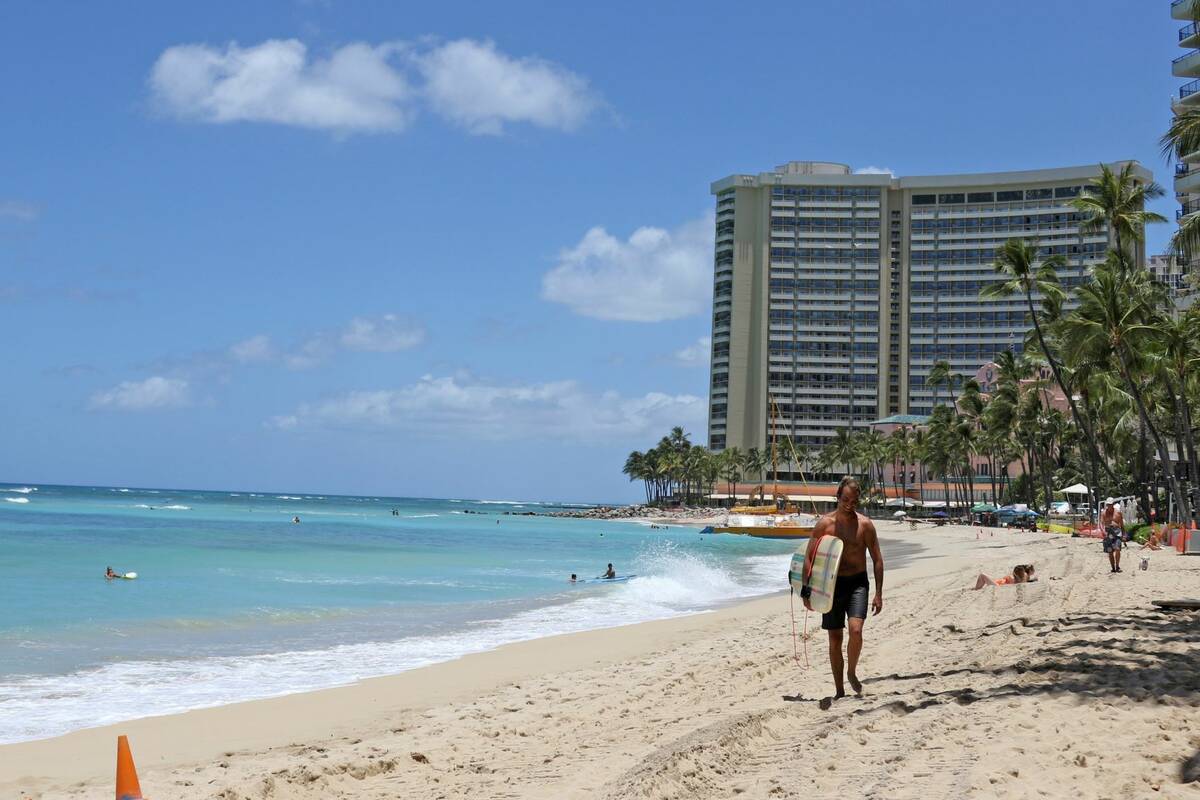Looking for an affordable home? Forget about Hawaii
HONOLULU — Only 1 in 5 households in Hawaii can afford to buy a single-family home — a dramatic drop from just three years ago, according to a grim housing report released by the University of Hawaii on Monday.
In 2021, 44% of Hawaii households could afford the mortgage on a median-priced single-family home. That figure is now 20%. As a result, home sales plummeted last year, hitting a 25-year low. But the slump had little impact on prices.
“We haven’t really seen any drop in prices, but there’s this huge increase in what it costs to buy a house because of interest rates,” said Justin Tyndall, an assistant professor of economics with the University of Hawaii Economic Research Organization and the lead author of the report. “Affordability is as bad as it’s ever been.”
High interest rates have had a crippling effect on would-be homeowners in the state by not only making mortgages significantly more unaffordable, but also reducing the number of houses on the market.
A majority of mortgage-holders in the state are paying an interest rate of less than 4%, according to the report, making many homeowners wary of putting their home on the market and trying to purchase something else at a much higher interest rate.
Renters struggling
The state’s housing market has also worsened for renters in the last year. Hawaii has the highest median rents in the nation and a majority of renters — 56% — are considered “rent-burdened,” meaning they spend more than 30% of their income on rent.
The Maui fires worsened the state’s housing crisis, causing prices to rise while “the availability of rentals have plummeted,” according to the report.
Short-term vacation rentals make up about 6% of the state’s housing stock, a figure that has grown in recent years but also varies dramatically by island. The number of active short-term rental listings grew 9% statewide between 2022 and 2023. Kauai saw the biggest spike, with a 22% jump in listings.
The number of short-term vacation rentals on Maui has actually increased slightly since the fires, despite the loss of 380 vacation rentals in West Maui and tax incentives for unit owners across the island to convert their units into long-term housing.
“The policy was supposed to incentivize a bigger shift away from vacation rentals and toward housing locals, but we haven’t really seen that in the aggregate,” Tyndall said.
While short-term vacation listings on Maui plummeted after the fire, they are now 2% higher than they were a year ago.
The report also found that “a significant portion of Hawaii’s property owners” are not residents of the state. People from out of state made up 13% of property owners on Oahu and 32% on Maui. More than half of property owners in Lahaina had an out-of-state mailing address.
On Maui, about 85% of vacation rentals are owned by people from out of state, Tyndall said.
Building limits
Another big takeaway from the overall data, Tyndall said, is that the state isn’t building enough housing to have any real impact on affordability. The state has significant issues with permitting delays, although some progress has been made in the last year in multiple counties, according to the report.
However, strict limits on where multi-family homes can be constructed, along with steep developer fees and permitting delays contribute to the high costs of condos and “reduce the amount of new housing the state.”
“While many households have a preference for single-family homes, building high-rise condominiums can provide many more units, allowing vacancies to propagate across the market, and pushing down housing prices everywhere, including for single-family homes,” the report says.
Converting thousands of vacation rentals into long-term rentals — which Maui’s mayor is proposing to do — could have a really significant impact on affordability, Tyndall said.


















